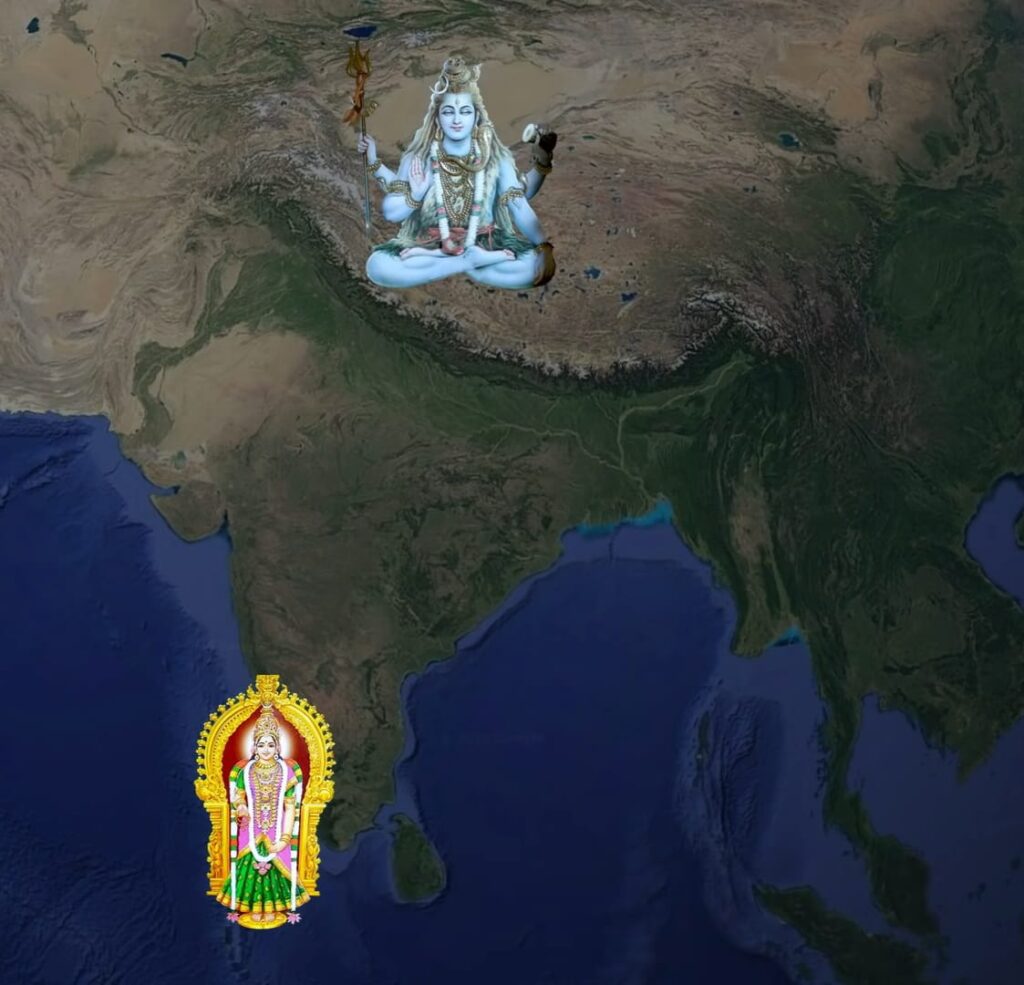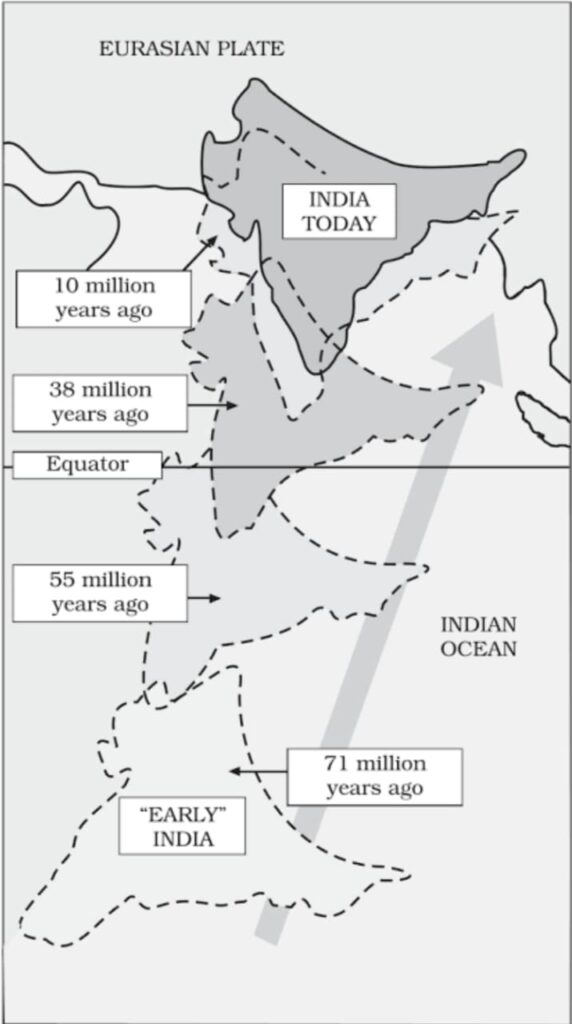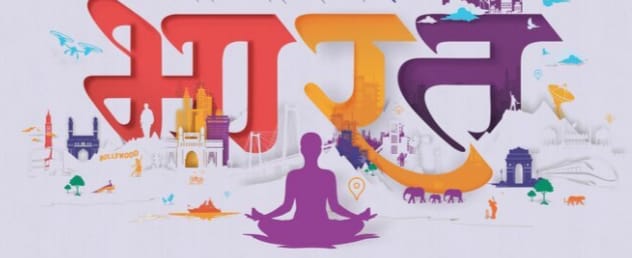The modern ideas of sovereign nation-state & individual liberty were born in countries like France, Holland, Germany, Italy & Spain. However, the western materialistic & reductionist worldview narrowed down the concept of state & liberty. Nation-states have divided humanity. The liberty of a person is curtailed by the restrictions of the state.
In ancient India, the liberty of a person was also limited by certain reasonable restrictions called Maryada. But Maryada abiding Indians aimed for absolute freedom which was called Moksha. Moksha is the absolute absence of all suffering. Absolute absence of limitations. The question arises why did the ancient Indians create Rashtra, a Nation that divides humanity? Because Moksha is Tapasya, penance and nation is its Tapo-Bhoomi, land for Tapas. The human body & Rashtra are the means to achieve absolute freedom, that is Moksha.
This is the age of globalisation. The concept of a Nation-state is a myopic ideology. Patriotism has often reached a frenzy for the masses in west which has caused much destruction to earth. Did the Indian state also come into existence with this kind of frenzy? The idea of India is very ancient. Hindus had defined their nation when Britain, France, Portugal and Spain were not even born. However, the Hindu definition of nation was not limited to the physical boundaries of the land.
उत्तरं यत् समुद्रस्य हिमाद्रेश्चैव दक्षिणम.
वर्षं तद् भारतं नाम भारती यत्र सन्ततिः.
Vishnu Puran 2.3.1
The country that lies north of the ocean and south of the snowy mountains is called Bhāratam there dwell the descendants of Bharata.
RĀSHTRA: DIFFERENT FROM NATION
Rashtra is a living entity. Land is her body, people are her prana & culture is her mind. The life view of ancient Indians was not reductionist. They had the ability to perceive Adi-bhautik (physical), Adi-daivik (divine) & Adhyatmik (spiritual), all aspects of reality, as one.
Bhārat also has these three aspects of existence. Bhārat is not just a physical entity consisting of land. It is a conscious life force, to be awakened like Kundalini.
A Kumari is immersed in Tapasya, penance in Kanyakumarī. Her goal is to unite with Adiyogī sitting calmly in Kailash. In this metaphor of Shiv-Pārvati the flow of Prana, vital energy between the two parts of the land is shown. In this lies the Kundalini of Yoga. Along with Kundalini there are 72 thousand Nadīs in body. Their channel sustains life. The rivers of Bhārat are its Nadīs. The river banks of Bhārat were always illuminated with the presence of Yogīs. As per Yoga three subtle Nadīs flow in the human body Ida, Pingala & Sushumna. Similarly, once Ganga, Yamuna & Saraswati used to flow through Bhārat. Places where the Nadīs of Kundalini meet are called Chakras. They are provided with special awakening powers. The junction where the rivers meet in Bhārat is known as Prayāgs. At these confluences Indians attained awakening. The body is nurtured by land therefore it should reflect the same. Yoga texts have shown Desh in the human body & Yogīs have been searching for the body in Desh.

BHĀRAT IS AN URDHVA-RETA LAND
Those who practice self-liberation are Urdhva-reta. Buddha was also an Urdhva-reta. He relied upon the energy of the Kundalini. There is an upward movement of sap in trees so they are also Urdhva-reta. The entire Indian tectonic plate is an Urdhva-reta. It is moving northwards. As her feet are in ocean and on crown lies the world’s tallest mountain, such Urdhva-reta land is nowhere on earth except Bhārat.
VARIOUS DERIVATIONS OF THE WORD BHĀRAT
FROM AGNI
Households worship divinities through Agni (fire) while Yogīs preserve it in Dhunī on their body. This brings harmony between inner & outer Agni. One of the names of Agni is Bharat. People who performed Yajna were known as Bharat-jan and the land where Agni always remains alive became known as Bhārat. Till recent times the women of India never allowed their kitchen fire to extinguish.
FROM SURYA
Our sleeping consciousness awakes with the rising sun. Sun nurtures us all. So one of the names of Sun is Bharat & the land of Surya-Vanshīs became known as Bhārat. Magnificent Sun temples were built all over India. The Sun temple of Multan or Moolsthān was gigantic. It was built by Saamb, son of lord Krishna. Now, it no longer exists. Those who plundered the Sun temples eventually destroyed India’s old boundaries & her cultural identity. As were the sun temples destroyed, so was Bhārat.
“The national unity must be founded on the sense of kinship, in the feeling of being kindred. In short, it must be spiritual. The remnants of binding cultures of Hindu & Buddhist have become just shrubs. While the dividing force has become as great as oak tree.”
Dr. Bheemrao Ambedkar
-Pakistan Or The Partition of India (1940)
FROM SARASWATĪ
The Sindhu-Saraswat region was once the centre of knowledge for the whole of India. That is the reason Indians are still in search of Saraswatī. One of the names of Saraswati is Bharatī, the goddess of knowledge. Bhārat was rightly named after her name since this civilization was established on knowledge right from the beginning. Knowledge means Gyān and mastery over skillful knowledge was Gyati or word Jati. Several Gyatīs or jatīs of India ensured the flow of skillful knowledge from generation to generation. Because of this India could remain the richest country of the world for the longest period of time. The highest knowledge is Brahm-gyan. Brahmdesh and Bhārat are synonyms.
Agni & Gyan defined the cultural boundaries of India. The western boundary was Persia while the northern was Tibet. When these shores were attacked, Parsīs brought their sacred Agni to India and The Dalai Lama brought back the old knowledge of Gyan. In these attacks, Bhārat lost its cultural land and humanity its cultural continuity.
BHARAT: SHAKUNTALA ‘S SON
‘Man’ word seems to be derived from the word ‘Manu’. The first King of India was Manu who was blessed with the quality of Manan, contemplation. He has a son Ikshwaku & a daughter Ila. Descendants of Ikshwaku became known as Suryavanshīs & those of Ila as Chandravanshīs. Later in the lineage of Ila Bharat, the son of Shakuntala, was born. Shakuntala was a divine beauty, the daughter of an apsara Menaka. Since the apsaras do not rear children she grew up in the ashram of sage Kanva, eating fruits dropped by the birds. Nurtured by birds, so became known as Shakuntala. Mother was brought up by birds and the son by lions. Only independent & cultured daughters can give birth to heroic sons. Bharat was a legendary king so the country embraced his name.
BHARAT: BAHUBALI ‘S BROTHER
The first Jain Tirthankar Rishabhdev’s eldest son Bharat was a Chakravartin. After his name the country derives its name. His younger brother, Bahubalī, once defeated him as well. But felt immense remorse for defeating the elder brother. Intense emotions can bring Samadhi. He renounced the world & stood still in the forest in Kayotsarga Mudra. Only a lionhearted warrior can possess such firm stillness. Over time, creepers climbed up his body. King Bharat arrived to offer veneration at his feet for his severe penance, Tapas. Bhārat has always venerated renunciation & Tapas.
BHARAT: LORD RAMA’S BROTHER
Living in the world detached like a lotus, is far more difficult than renouncing the world. Another king Bharat, brother of lord Rama, had done this for 14 years.
Bhārat from Bharat kings, Bhārat from Bharat names of Agni & Sun, Bhārat from Bhāratī. The name of Bhārat has three ideals contained in it: Knowledge, Power & Renunciation.
One book, one messenger, one god & a uniform society that has faith in these, were never a characteristic of India. Countless scriptures, innumerable sages, several theist & atheist philosophies and continuous debate on them was the culture of India. Hindu sects both Vedic & non-vedic had differences in their philosophies. They competed with each other. There was rivalry & some incidents of violence too as an exception. But there are no cases of large-scale massacres. Because they all believed that there is a divine presence in every living being. They were all linked with the principle of Dharma. The Buddha & Tirthankars can be seen in Vedic temples. Jain Tirthankars are respectfully placed in the Shankaracharya temple of Shringerī. Jain temples of Ranakpur were made under the patronage of Shaivite Rana Sanga. Vedic Agnimitra Shunga renovated a Bauddh Stupa. King Harshvardhan was a Shaivite but patronized Buddhism. Westerners often confuse cultural diversity for chaos being unmindful of the fact that it creates ‘Rasa’ for Indians.

ABOUT HINDUSTAN
Foreigners used to call land Bhārat Hindush, India & Shintu and its inhabitants were Hindus.
“India is a quadrilateral shaped country bounded by the ocean on southern & eastern side.”
– Megasthenes Indica -300 BCE
Around the same time, Iranian king Darius also called it Hindustan. The name Hindustan was certainly not limited to Sindhu Souvir province. There were two ways to enter India, Khyber pass & Bolan pass, with both opening to the Sindhu river. So the river became the symbol of Indians for foreigners.
Today we live in a Bhārat devoid of Mount Kailash, Ganga Sagar, Sindhu & other essential facets of the Indic culture. The unhindered motion of Yogīs from Kanyakumari to Kailash was the communication between Sadashiv & Adishakti. That communication is gone. People who were drawing boundaries of India in 1947, had no interest in the divine aspect of this Yōg Bhoomi.Now, there are no constructive discussions around “भारत ने कितना भारत खोया ?”.
SOURCES:
1. Pakistan Or Partition of India 1940 – Dr. Bheemrao Ambedkar
2. Megasthenes Indica
3. Upward
4. Infinity foundation official Youtube
- BHĀRAT: EVOLUTION OF A DYNAMIC & DIVINE RĀSHTRA - September 12, 2023
- ECHOES OF INDIC FACETS EMBEDDED IN JAPANESE CULTURE - July 7, 2023
- YOGINIS: SACRED FEMININE DIVINITY & ENLIGHTENMENT - May 25, 2023

